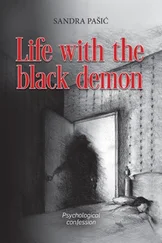Otto Dietrich, b Essen 31 August 1897, d Düsseldorf 22 November 1952; studied philosophy and political sciences, newspaper editor; 1929 joins the NSDAP; 1932 joins the SS; 1930/31 deputy chief editor of the Nationalzeitung; 1931 head of the Party press office; 1933 head of the Reich press office; 1949 condemned to seven years’ imprisonment, released 1950.
Heinz Lorenz, b Schwerin 7 August 1913; studies law and national sciences; 1932 press shorthand writer for the German Telegraph Office; 1936 responsible for foreign news to Reich press chief Dietrich; end of 1942 chief editor of the German News Bureau and in Führer headquarters until 29 April 1945. A prisoner of the British until 1947.
Johann Rattenhuber, b Oberhaching, Munich, 30 April 1897, d Munich 30 June 1957; 1920 joins the Bayreuth police; 1933 adjutant to Police President Himmler; 1933 appointed to set up the ‘Special Purposes Commando’ for Hitler in Berlin; 1935 head of the independent Reich Security Service (RSD), builds up various RSD departments, head of the RSD until 1945; 2 May 1945 captured by the Red Army, prisoner of war in Russia until 16 November 1951.
Peter Högl, b Poxau, Dingolfing, 19 August 1897, d Berlin 2 May 1945 (shot through the head); profession: miller; 1919 attends police college in Munich; 1920 joins the police; 1932 joins the criminal police; 1933 in the Führer’s security department; 1934 SS-Obersturmführer; 1935 head of Department 1 in the Reich Security Service; 1944 criminal director of the Reich Security Service; 1945 witnesses Hitler’s suicide.
Traudl Junge’s tasks included typing itineraries and reports of losses, and taking down Hitler’s public speeches and letters from dictation. Military orders were typed by the secretaries of the various departments concerned with them.
Wilhelm Keitel, b Helmscherode in the Harz Mountains 22 September 1882, d Nuremberg 16 October 1946 (executed); 1901 begins military career; 1914–1918 fights in the First World War, as captain and general staff officer; 1923 major; 1929 lieutenant colonel at the Reich Defence Ministry; 1931 colonel; 1934 major general and infantry commander VI in Bremen; 1935 head of Wehrmacht office in the Reich Defence Ministry; 1936 lieutenant general; 1937 general of artillery; 1938 colonel general and appointment to head of the OKW, thereafter Hitler’s closest military adviser; 1940 field marshal; 8 May 1945 signs the unconditional surrender of the German Wehrmacht in Berlin Karlshorst; 1 October 1946 condemned to death by the military tribunal in Nuremberg. Holder of the Knight’s Cross of the Iron Cross.
Friedrich ‘Fritz’ Darges, b Dülseberg 8 February 1913; 1933 joins the SS; 1934 trains at Bad Tölz Junkerschule; from 1935 SS Untersturmführer on active service and as staff officer; 1940 SS Hauptsturmführer, assigned to the adjutancy office at Führer headquarters; 1942 company commander in SS Panzer division Viking, wounded; 1943 SS Sturmbannführer and personal adjutant to Hitler at Führer headquarters; 1944–1945 SS OberSturmbannführer, divisional commander and regimental commander in SS Panzer division Viking on the Eastern Front; 8 May 1945 interned by the US Army; released in 1948. Holder of the Knight’s Cross of the Iron Cross.
Otto Günsche, b Jena 24 September 1917; 1934 joins the Leibstandarte-SS Adolf Hitler (LSSAH); 1941/1942 trains at Bad Tolz Junkerschule, sees active service; January to August 1943 personal adjutant to Adolf Hitler at the Wolf’s Lair, followed by service at the front; from February 1944 Hitler’s personal adjutant again; 1944 SS Sturmbannführer; 2 May 1945 captured by the Russians; labour camp in Russia; May 1956 released from the East German penitentiary of Bautzen.
In these comments Traudl Junge was referring to the regular passenger trains on German railways of the time. Modern readers might get the impression that she meant the deportation trains taking Jewish prisoners east in inhuman conditions, but she did not intend any such association when writing this manuscript in 1947.
Willi and Gretl Mittlstrasser, husband and wife, looked after the Berghof household until the collapse of the Third Reich.
This was Paula Hitler, b Hafeld, Austria 26 January 1896, d Schönau, Berchtesgaden 1 June 1960; takes a commercial studies course, works in the Chancellery in Vienna, sacked in 1930 apparently because Hitler is her brother; receives a monthly pension from Adolf Hitler from 1933 to 1945; 26 May 1945 tracked down by the British army at the Dietrich Eckart hut in Berchtesgaden and interrogated; campaigns until her death for her share of the legacy from Hitler’s estate.
Rudolf Schmundt, b Metz 13 August 1896, d Rastenburg, East Prussia, 1 October 1944; 1938 appointed chief Wehrmacht adjutant to the Führer, promoted to lieutenant general; 20 July 1944 severely injured in the plot to assassinate Hitler. Dies a few weeks later in Rastenburg military hospital.
Karl-Jesko von Puttkamer, b Frankfurt an der Oder 2 April 1900, d Neuried 4 March 1981; 1917 enters the Reich navy; 1930 lieutenant captain; 1933 to 1935 naval liaison officer to High Command of the army in Berlin; 1935 2 ndadjutant and naval liaison officer to Führer headquarters; 21 April 1945 reaches the Berghof by way of Salzburg; 10 May 1945 arrested by the US Army; 1947 released.
Walter Frentz, b Heilbronn 21 August 1907; studies electrotechnology in Munich and Berlin, cameraman with the UFA film studios, camera director for Leni Riefenstahl; 1939 film reporter at Führer headquarters; 1942 lieutenant in the Luftwaffe, accompanies Hitler on all his journeys and is also with him in the various Führer headquarters to film and photograph events; 24 April 1945 flees from Berlin; May 1945 taken prisoner by the US army, released at the end of 1946.
Hugo Blaschke, b Neustadt 14 November 1881, d Nuremberg 6 December 1959; studies dentistry in Philadelphia and London; 1911 opens a dental practice in Berlin, is Hermann Göring’s dentist; 1931 joins the NSDAP, is Hitler’s dentist from the end of 1933 to 1945; 1946 interned; 1948 released, practises dentistry in Nuremberg until his retirement.
Traudl Junge means the Zum Türken inn, which is still standing.
The Platterhof was a restaurant or café with a hairdressing salon attached; its clients included Eva Braun and Traudl Junge. The building was demolished in 2000.
Hans-Karl von Hasselbach, b Berlin 2 November 1903; studies medicine; 1936 surgical training at Munich University Hospital; 1933 joins the NSDAP; 1934 joins the SS; 1936 attendant doctor to the Führer’s staff as deputy to Dr Brandt; 1942–1944 appointed attendant doctor to Hitler at Führer headquarters; October 1944 dismissed on account of a dispute about Professor Morell, medical director of a field hospital on the Western Front until the end of the war, interned by the US army; 1948 released from internment.
Herta Schneider, née Ostermeier, b Nuremberg 4 April 1913; schoolmate and closest friend of Eva Braun. She met Hitler through Eva Braun in 1933, and was a frequent guest at the Berghof until April 1945.
Читать дальше
![Traudl Junge Hitler's Last Secretary: A Firsthand Account of Life with Hitler [aka Until the Final Hour] обложка книги](/books/416681/traudl-junge-hitler-s-last-secretary-a-firsthand-cover.webp)



![Джонатан Димблби - Barbarossa - How Hitler Lost the War [calibre]](/books/385421/dzhonatan-dimblbi-barbarossa-how-hitler-lost-the-w-thumb.webp)







